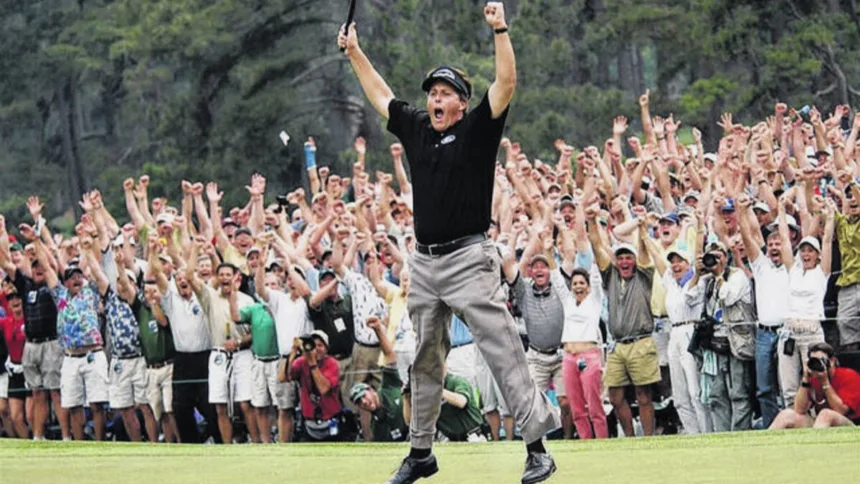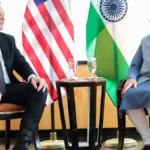I’ve built a profession out of chronicling the few genuinely before-and-after dates in my life, but the majority have nothing to do with sports. However, after spending the next twenty years, I can state with certainty that this date altered my life, all because of a golf tournament in Georgia.
Although I knew about golf before this day, it was during the exciting Masters final round that I was first exposed to the grand spectacle of the game. I plan to immerse myself in the game for the next two decades, and how long I live will determine how long that is.
As the 2024 Masters gets underway, I will commemorate my own 20 years of golfing engagement. My masters green, or emerald anniversary, as some could refer to it.
It seems unlikely that my family, who are not big golf fans, would share my decades-long obsession. Still, fate stepped in at a family get-together, of all places.
My grandfather seldom watched golf, but when he did, he would always turn on the final round of the majors, especially the Masters. The last round of the 2004 event fell on Easter Sunday. After our family’s traditional ham lunch at my grandparents’ house, I found my 9-year-old self-watching the Masters in the den with a few of us.
That may have been the end of the story if it had been a different year with a less thrilling ending. But in the lengthy history of the most legendary event in sports, this was 2004 — one of the most unforgettable championship rounds.
Phil Mickelson sought his elusive first major victory against the great Ernie Els in a back-nine showdown. Now that Lefty has won six major titles, it’s hard to imagine a world where he was seen of as the guy who never could win the big one, but that was the reality up until his mid-30s. Mickelson and Els pulled really amazing achievements. Els took the lead after birdieing the eighth and thirteenth holes, but Mickelson birdied five of the last seven holes. On the last hole, he won by one stroke with a birdie putt of a similar length, matching Els with an 18-footer.
Though I didn’t completely grasp golf scoring at the time (that came later), I was nevertheless able to follow the drama of the day, especially with regard to Mickelson’s final hole and the significance of the final putt. Lefty threw up both arms in delight as the ball, which Mickelson said was a “nudge” from his recently departed grandfather, narrowly missed the left lip and fell into the cup.
I appear to have insisted on staying for the green jacket presentation as my folks were preparing to leave. I genuinely thought, in all my stupidity at the time, that the green jacket was some sort of pullover that the winner would wear on the course the following year, similar to the yellow jersey that the Tour de France leader wears.
I had a golf revelation and began smashing balls with an old putter my dad had found at Goodwill around the yard. I even broke the glass in our storm door with a single misfired shot, so I had to play yard golf with plastic balls. For Christmas, I got a junior set of golf equipment.
Throughout 2004, I kept an eye on the major championships and the sporadic PGA Tour events, starting to take in a lot of information about golf—some of it beneficial, some of it meaningless. Though there was less drama at the 2005 Masters, including Tiger Woods’ renowned chip-in at the 16th hole, my parents’ initial concerns that this would just be a fleeting phase gradually subsided.
Within the twenty years that have elapsed, I have participated in competitive junior and high school games. I spent as much as three or four hours a week playing the game while it was closed during the COVID-19 pandemic. I’ve covered the game as a journalist for magazines and events including the 2022 Pine Needles U.S. Women’s Open and PGA Tour competitions. As a spectator, I have seen several major championships since 2004 and have been enthralled with the skills of players such as Jordan Spieth, Bubba Watson, Phil Mickelson, and many others—not to mention the legendary Eldrick Tont Woods.
The game of golf has taught me so much. My involvement in the sport has helped me grow in all of these areas. The core values of the First Tee, an organization I was involved in when I was a young golfer, are honesty, integrity, sportsmanship, respect, confidence, responsibility, perseverance, courtesy, and judgment. I now know how important it is to put in a lot of effort to reach goals and, yes, even how to handle disappointment when they are not achieved. I’ve made acquaintances via golf that have either grown closer or started from scratch.
I wonder what that 9-year-old child would say, looking back at how it all started 20 years ago, if he had held a crystal ball, about the current condition of the game. Golf is booming as a recreational activity since it was one of the few industries worldwide to expand throughout the epidemic and has mainly kept up its momentum ever since. However, the professional game is about to enter its third year of a civil war, with competing tours dividing its top players and plenty of scathing comments from both sides.
But this week’s Masters will serve as a reminder of why I initially became enamored with the game, as it has for each and every one of the previous 20 years. It’s without a doubt my favorite sports week of the year, a ceremonial mark of spring’s return on the vibrant campus of Augusta National, home to some of the greatest golf in the world.
I hope and pray that the 88th Masters will be as exciting for everyone as it was for me 20 years ago, and that new viewers will be captivated in the same way that I was.
As I embark on my twenty-first year of unwavering dedication to the game of golf, may it, like it has for the previous two thirds of my life, offer me happiness, vitality, companionship, and the occasional hard lesson as well.
Read More: Zion Williamson’s challenges to break his personal record in the NBA





